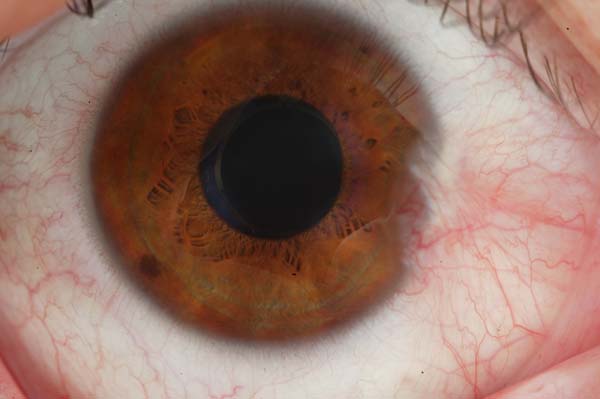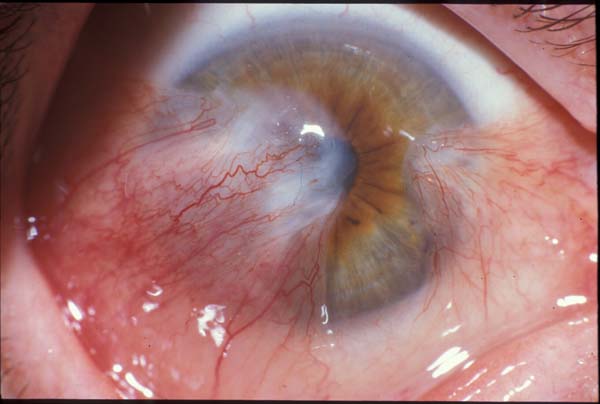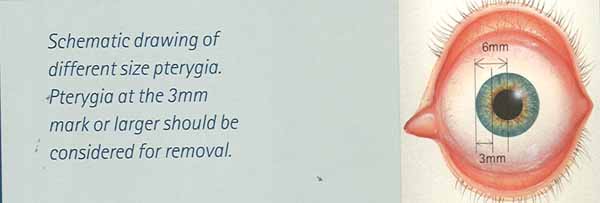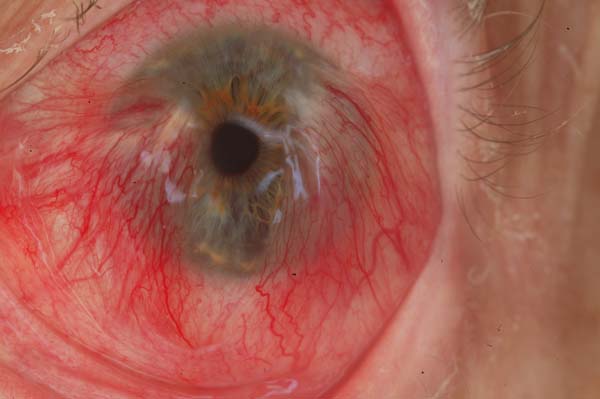Isn't pterygium a trivial annoyance anyway?
There has been a general tendency in Australia to either ignore or trivialise this condition by both doctors and patients. Why should this be?
Firstly it is so common a condition that it commonness invokes a feeling in patients and the doctors treating them that it cannot be serious or even taken seriously.
Secondly, patients have many times been put off by doctors who realise that their method of treatment frequently results in the pterygium returning.
Of course in many patients this is far from a trivial disease. It can cause significant loss of vision, considerable irritation and is often a major cosmetic concern….after all what is the first part of the body that people being introduced look at…yes, the eyes.
It is true that frequently, apart from the patient with a pterygium being aware of the condition on their eye, a pterygium may cause no problems and require no treatment.

Small pterygium which is not bothering the person and can be left alone
There is little information easily available about this condition and much that is accessible on the net is at least biased or at worst incorrect.
All of the above leaves a very “confused” situation for the patient with a pterygium to deal with.
One of the difficulties after the patient has confirmed that they do in deed have a pterygium, is do they need it removed?
The indications for surgery are many and varied but the following principles apply:
If the vision is already affected by the pterygium, the pterygium has been left too long….so although all pterygia do not require removal, the aim is to remove them before they affect vision because, although successful removal can still be achieved in this situation, the vision does not always return to a normal level.

Blinding pterygium
I believe that if the pterygium grows to more than 3mm over the coloured part of the eye (the iris) then it should be removed even if the patient has no symptoms.If the irritation is unremitting even with regular lubrication or if the patient has had to resort to frequent use of “whitening” drops then serious consideration should be given to surgery even if the pterygium is smaller than 3mm over onto the coloured part of the eye.

If the person with the pterygium finds the effect of the pterygium on their appearance is significantly interfering with their quality of life e.g. they are constantly being asked whether they are on drugs, hung-over or have not had enough sleep, serious consideration can be given to surgery.

An eye with two pterygia causing extreme embarrassment
There are also a number of much less common reasons for considering surgery including, any unusual appearance of the pterygium that might suggest early cancer of the eye, restriction of movement of the eye by the pterygium, or in a patient who will need their cataract removed or is to have refractive surgery. (laser surgery to reduce the dependency on glasses.) In the latter situation, the pterygium needs to be removed first, before cataract or laser refractive surgery.
Of course the next logical question you might ask is how do I decide whom to see about my pterygium? I will attempt to deal with this issue in the next blog.
